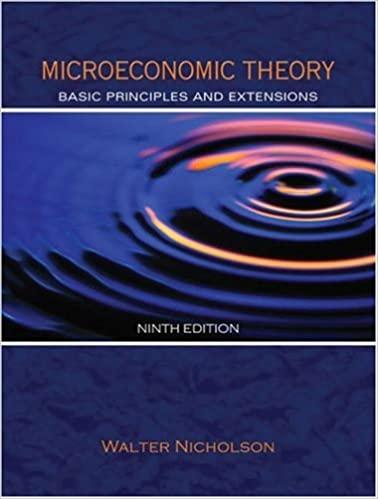4.8 The lump sum principle discussed in Example 4.3 can be applied to transfers, too, but in...
Question:
4.8 The lump sum principle discussed in Example 4.3 can be applied to transfers, too, but in this case it may be easier to use expenditure functions.
a. Consider the expenditure function given by Equation 4.59 in Example 4.4. How much would it cost the government (in terms of extra expenditures for this person) to raise utility from 2.0 to 2.5 with unchanged prices? If the government wished to permit individuals to attain the same utility target by subsidizing the cost of hamburgers, what should the hamburger subsidy be? How much will such a subsidy cost the government?
b. Explain intuitively and with a graph why the income transfer in part
(a) proves to be a lower cost way of raising utility than does the hamburger subsidy.
c. Is the lower cost of lump sum transfers a general result that applies to the many-good case as well?
Step by Step Answer:

Microeconomic Theory Basic Principles And Extensions
ISBN: 9780324270860
9th Edition
Authors: Walter Nicholson






